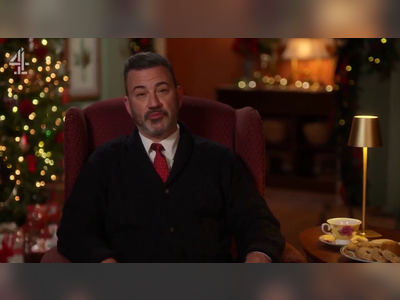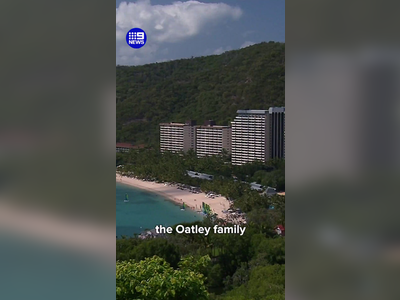
The hidden ocean pollution killing marine mammals
I've worn glasses since the age of five, my hearing isn't brilliant in busy environments and, like many others, I lost my sense of taste during Covid-19, which was incredibly disorientating. Perhaps once our senses are pushed to their limits, we begin appreciating them all the more. But we're certainly not the only ones relying on multiple senses: marine mammals depend on them to communicate, navigate, feed, hear and detect danger.
It's hard for us to imagine how marine creatures sense within their world. What's clear is that the picture is complex, and that human-induced impacts make that even more challenging.
Pollution is ubiquitous but not homogenous. There is oil and gas exploration on the seabed, military exercises, increasing shipping traffic and the relatively new threat of deep sea mining. Add to that sewage outflows, industrial discharge and agricultural run-off, the marine environment is getting busier, noisier and more polluted. So what are the hidden dangers to marine life?
As a marine strandings volunteer for the Devon Wildlife Trust in south-west England, I'm regularly asked to take photos and measurements of marine mammals stranded along my local coastline. Sometimes, there'll be noticeable injuries, rake marks from the teeth of bottlenose dolphin attacks perhaps, long straight cuts in the skin from a fishing line or occasionally a tail clean cut off as a result of bycatch. Usually though, the actual cause of death isn't simple to identify. A crack team of scientists are on a mission to discover more about how human-induced impacts affect UK populations of whales, dolphins and porpoises.
To find out more about their research, I visited Rob Deaville, a strandings scientist at the UK Cetacean Strandings Investigation Programme, this summer. Every year, he dissects about 150 stranded porpoises, dolphins and whales to find out what might have killed them. "In some cases, it can be very evident, for example bycatch, ship strike, grey seal predation, bottlenose dolphin attack, those causes of death are really obvious. But even a high level of pollution is not necessarily causal in an animal's death, it's more associated," says Deaville. "You're looking through a keyhole at one aspect, at what I call the terminal end, and then trying to look backwards at what that animal has experienced throughout their lifetime.
"High noise pollution or limited prey availability, climate change, chemical pollution all those things have an impact – it's hard to tease that apart for any single individual pressure," he says.
Marine mammals depend on their senses to communicate, navigate, feed, hear and detect danger
Watching Deaville deconstruct this porpoise was a fascinating biology lesson in itself. But more than that it highlighted just how much these creatures can reflect their marine environment and how they live within it. From the parasitic worms living in their lungs, guts and liver to the delicate fish bones found within one of porpoise's three stomachs, every insight is valuable.
But the most crucial of all, Deaville tells me, is the sample of blubber, that fatty layer just beneath the skin, that he cuts from just by the base of the dorsal fin. It's about an inch thick and acts as a ledger – Deaville will send it off for pollutant analysis by expert toxicologists. This helps build a picture of some of the less visible impacts that may be affecting marine life and potentially contribute to their death.
I set out to investigate how the less visible forms of human-induced pollution – both chemical and acoustic – could affect the senses and survival of porpoises, dolphins and whales, and discovered that there's a lot going on beneath the waves.
Super senses
"For whales and dolphins, 'listening' is as important as 'seeing' is for humans, as they live in a world of water and sound," says Danny Groves, communications manager at the non-profit Whale and Dolphin Conservation. He adds that the impacts of human-induced disturbance on cetaceans are "huge".
"Noise pollution threatens whale and dolphin populations, interrupting their normal behaviour, driving them away from areas important to their survival [for breeding, socialising and feeding] and at worst injuring them or sometimes even causing death," he says. Natural impacts such as earthquakes and lightning strikes also make big, sudden noises but tend to be more intermittent.
Toothed whales, a group that includes narwhals and humpbacks to dolphins and porpoises, hunt using echolocation or biosonar. They hear at high frequency ranges. Baleen whales hear at lower frequencies, and may be more affected by shipping noises as a result.
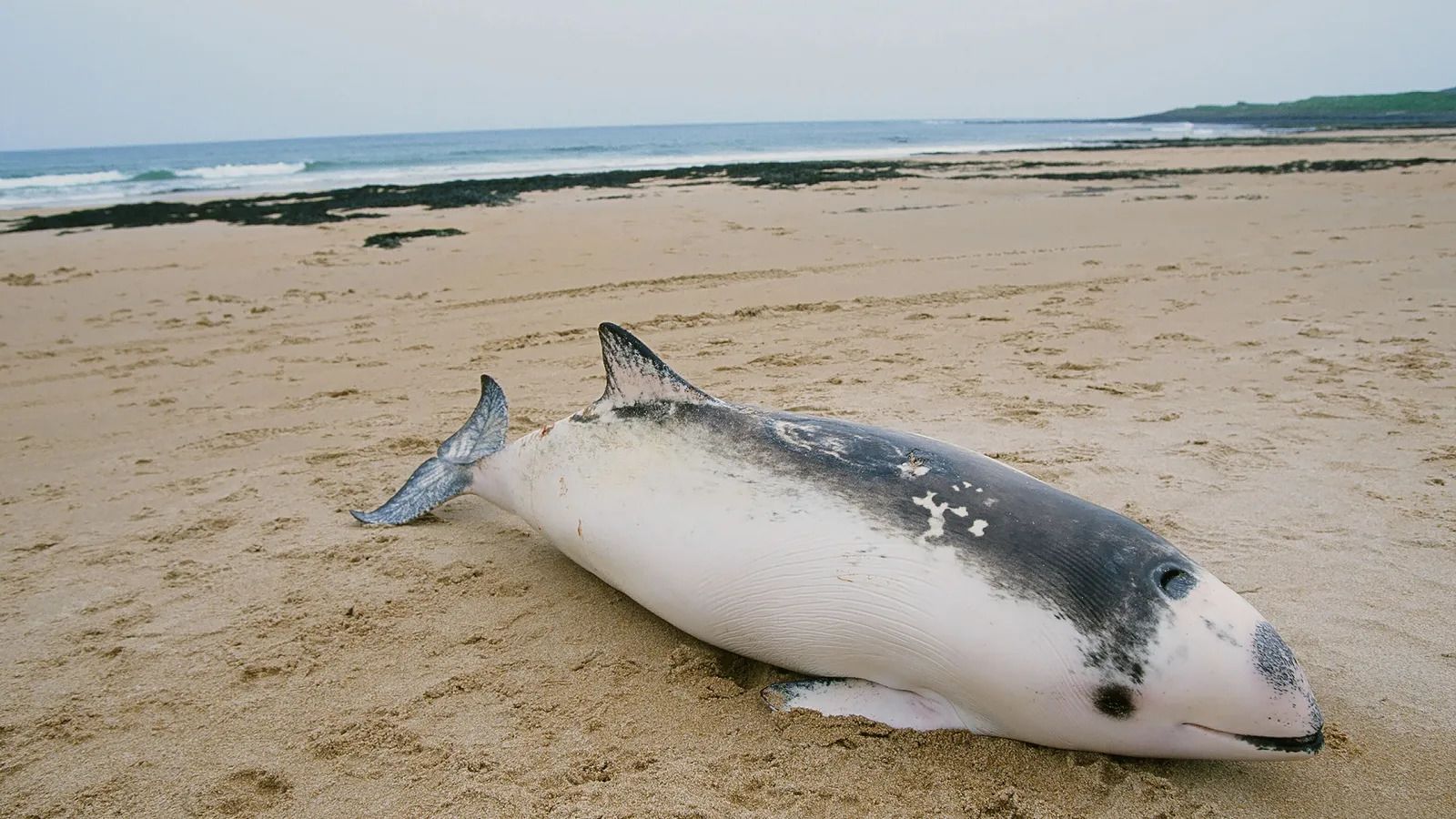 A porpoise autopsy revealed just how much these creatures can reflect their marine environment
A porpoise autopsy revealed just how much these creatures can reflect their marine environment
Chemoreception, that includes both smell and taste, could play a significant role too. Reidenberg explains that baleen whales can possibly smell, while some whales have taste receptors on their tongues but that it's not yet clear what exactly they are detecting. "They tend to swallow prey whole so maybe they are tasting the water to detect when they get close to prey or sensing salinity which may help them navigate," says Reidenberg. "It's even possible that narwhals could sense salinity through the sensitive pores in their tusk – that could be a really important sense."
Whale vision is "much better than we'd expect it to be," says Reidenberg, though some species rely on it more than others. Indus and Ganges river dolphins are functionally blind because their murky habitat precludes them needing to see. Orcas, on the other hand,spy-hop out of the water when hunting seals and have relatively good eyesight.
An industrialised ocean
Research suggests that all these ways of sensing are being impaired by human activity.
For whales, dolphins and porpoises, both chemical and acoustic pollution affect the way their bodies can function in many ways. Some effects are immediate and acute while others are more long-term and chronic. Besides impacting their senses and ability to communicate, marine pollution can impair their fertility and immune systems.
Thomas Goetz, an expert in bioacoustics at the University of St Andrews in Scotland, studies how marine mammals are affected by human-generated noise and how sound can be used to keep animals away from harm. He explains why context is key: "To really understand the effects of a pollutant, you really need to understand the physiology of this animal, of the sensory systems for each species." Each pollutant in a cetacean's habitat can have different effects. "There's unfortunately no way around looking in real detail and accepting the complexity of it…because they have all evolved very different sensory organs and their perceptual worlds differ," says Goetz.
Acoustic pollution can hinder communication and echolocation sounds, change an animal's behaviour and elevate stress levels. For North Atlantic right whales, low-frequency noise from big ships can result in an increase in stress-related chemicals linked to growth suppression, reduced fertility and poor immune system function. That chronic stress is having a physiological impact.
Sudden and acute impulsive noise in the marine environment might lead to ear trauma haemorrhage, while more chronic exposure from the constant low-level whirr of a shipping lane nearby could perhaps shift its behaviour patterns and make communication or feeding more difficult. Deep-diving whales and dolphins can also suffer from decompression sickness or 'the bends' when they surface too quickly. Over time legions or tears in the internal tissue form due to nitrogen bubble formation, but it's hard to conclude whether that happened due to natural causes or human-induced noise.
"Different species are more sensitive to sound than others," says Deaville, who motions towards the Cuvier's beaked whale tooth on the desk in front of him. "That's the deepest diving cetacean species, it holds its breath for nearly three hours, dives down to 3000m (9843ft) in some instances and is really operating at the edge of what is physiologically possible," he says. "That's perhaps why they are more sensitive to noise disturbance - most of these mid-frequency sonar navy-related mass strandings involved beaked whales, particularly Cuvier's. So I suspect if they dive down as deep as they possibly can they're more at risk of coming to the surface too quickly and getting into conditions that might be problematic."
Scientist Maria Morrel at the University of Veterinary Medicine in Hanover, Germany, is studying the ears and ear bones from stranded toothed whales such as pilot whales and developing a protocol to assess loss of hearing in whales. Once stabilised in formalin to preserve the sample, she analyses the ear using a scanning electron microscope and has noticed that the loss of the tiny hair cells and membrane scarring within the inner ear may indicate loss of auditory function. But when that hearing loss happened exactly and what caused it remains unknown.
According to Reidenberg, military sonar pulses act like a sound bomb and certain frequencies could result in decompression sickness. The US Navy, she adds, does its best to protect marine wildlife: "Sonar is well-regulated but in wartime those regulations are lifted – the navy is making extraordinary efforts to tag, track and monitor whales to protect them from sonar exercises."
That said, military operations in Europe have been implicated in mass cetacean deaths. When 85 harbour porpoises stranded along 100km (62 miles) of Danish coastline within one week of each other during April 2005, bycatch was initially established as the cause of death for most, due to net markings on their skin and the loss of tail flukes. Local fishermen confirmed that porpoise bycatch was much higher than usual in nets that had been set to catch lumpfish. Further investigation revealed military ships in the area that week, en route to a huge naval exercise.
In a study, Andrew Wright, a marine mammal researcher from Aarhus University in Denmark, concluded that while the use of sonar cannot be confirmed, it certainly cannot be ruled out as a contributing factor to increased bycatch rates. Perhaps sonar resulted in more porpoises being driven away from the noise towards nets, or perhaps disturbance masked their ability to detect the static fishing gear, he said. As Deaville states, "these things stack up in combination".
That highlights the problem – it's impossible to disentangle every effect.
Besides impacting their senses, marine pollution can impair mammals' fertility and immune systems
Deep-sea mining could also cause severe disturbance, according to new research. Marine researchers estimated that noise from just one mine on the seabed could travel approximately 500km (311 miles) through the water column in gentle weather conditions. In places where multiple mines might operate, the cumulative effect of acoustic pollution could be far greater. Because seabed mining companies have not yet shared their data on noise pollution, this study used noise levels from well-studied industries such as oil and gas industry ships and coastal dredges to model 'conservative' estimates.
The actual seabed mining equipment is far larger and more powerful than the proxies, the experts say. One of the study co-authors, Christine Erbe, a professor in underwater acoustics at Australia's Curtin University, says: "Estimating the noise of future equipment and installations is a challenge, but we don't have to wait until the first mines are operational to discover the noise they make. By identifying the level of noise in the engineering design phase, we can better prepare for how this might impact marine life."
In the Arctic, narwhals – deep-diving whales with the long, protruding unicorn-like tooth – live relatively far from human activity. But as the ice melts, more shipping routes are opening up through this region and oil and gas exploration is increasing. Scientists from the University of California have recently found that when narwhals in Greenland were exposed to seismic air guns (oil and gas survey instruments which produce high-intensity sound bursts), they immediately began diving quickly down from the surface. Normally, they'd glide down to conserve energy, but this speedy escape tactic is affecting how much blood and oxygen circulates in their body. It also distracts from other behaviours such as feeding, according to data collected using monitoring tags.
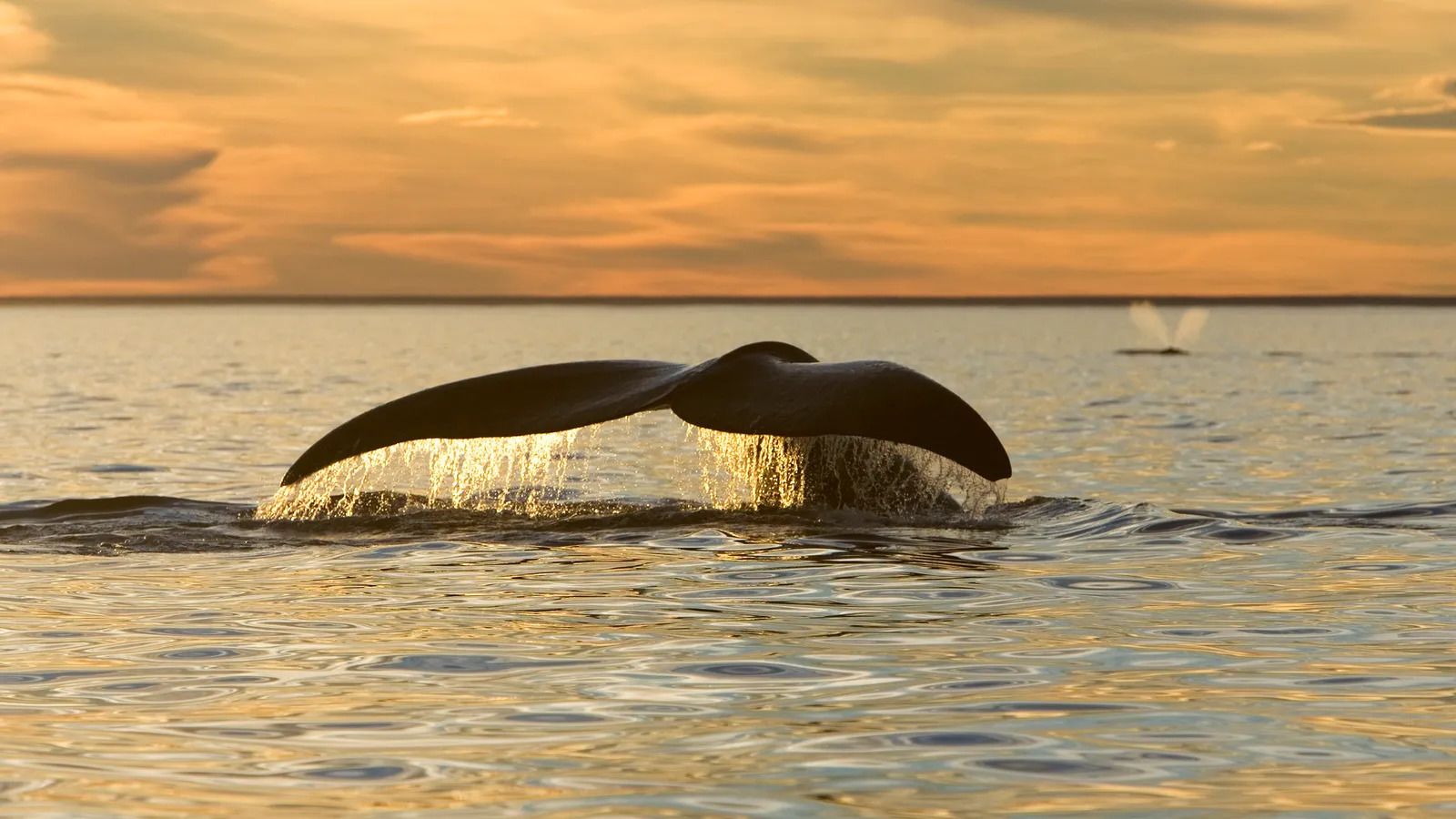 Rather than having to cope with one threat a time, marine mammals
experience the combined pressures of multiple forms of pollution
Rather than having to cope with one threat a time, marine mammals
experience the combined pressures of multiple forms of pollution
All of these invisible pollutants need to be taken into account. Hanna Nuutila, a marine ecology researcher at Swansea University, Wales, says it's vital to appreciate the cumulative effect of different stressors and pathways to disturbance. "Disturbance is both physical such as in-water structures (that includes every single coastal and offshore construction from oil and gas platforms to windfarm piles, harbours and marinas, and renewable energy structures) but also mobile in terms of ships, ferries, tankers and luxury cruisers," she says. She adds that all marine renewables are having to undergo much more detailed scrutiny in terms of impacts on wildlife than oil, gas and nuclear ever did.
"Obviously fishing too causes not just entanglement but also decreasing prey availability. All these tend to have a noise effect as well while most also leak oil, organic waste or chemicals into the sea." Nuutila emphasises the need to create designated safe zones free from human disturbance and the Marine Mammal Protected Areas Task Force runs a global initiative to create just that, in the form of Important to Marine Mammal Areas.
Swimming in a toxic soup
Toxic, synthetic chemicals are perhaps one of the most insidious forms of pollution entering the ocean. The worst culprits are persistent organic pollutants (POPs) that don't break down easily and are lipophilic or fat-loving; they end up in the blubber of porpoises, dolphins and whales. One particularly toxic legacy contaminant – so-called because it's still causing problems decades after being banned – is a class of 209 industrial chemicals known as polychlorinated biphenyls or PCBs. Invented in the 1920s, they were used in machinery coolant, electrical goods, flame retardants, paints and building sealants. Although banned globally more than 40 years ago, they linger in landfills and escape into the marine environment.
Deaville explains why PCBs are so concerning: "They work in two ways, they affect the immune system, so [animals] might have lots of secondary diseases because [their] immune system is basically knackered and more insidiously they also affect reproduction so in highly PCB-exposed populations there'll be a drop-off in young animals being born.
"A population of whales might not have a calf for a long time even though they should be reproductively active – that to us would be a red flag and indicate potential PCB exposure."
In 2016, an orca known as Lulu was found dead on the coast of the Isle of Tiree, the most westerly island of the Inner Hebrides in Scotland, after becoming entangled in fishing gear. A post-mortem of her body found that her body contained extremely high levels of PCBs (100 times the toxicity threshold for PCBs in marine mammal blubber) and scientists concluded that she was one of the most contaminated animals on the planet in terms of PCB burden. On examination of her ovaries, the scientists at the Scottish marine animal stranding scheme found no evidence of her ever having been reproductively active.
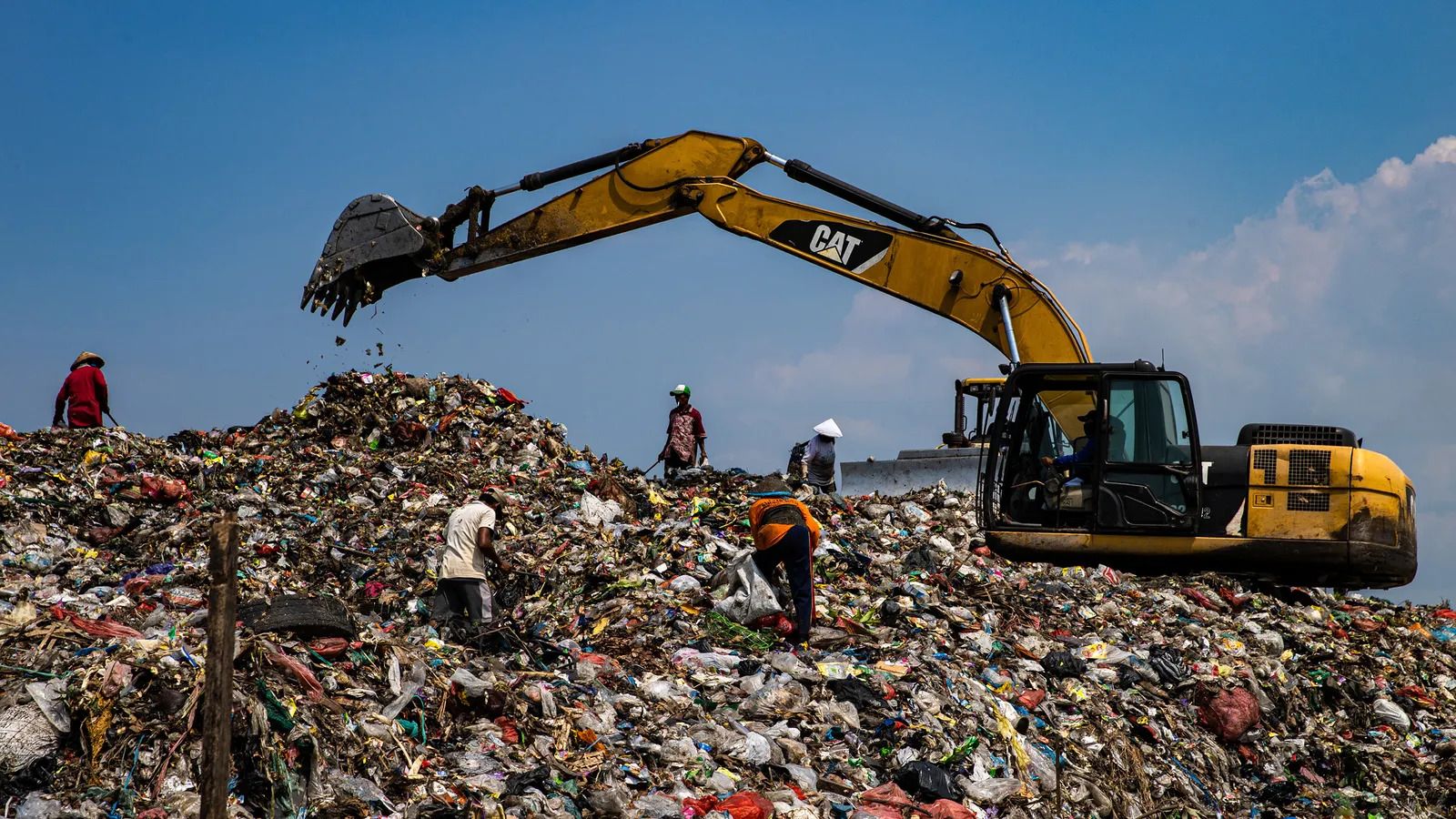 Industrial chemicals known as PCBs linger in landfills and escape into
the marine environment, damaging mammals' reproductive systems
Industrial chemicals known as PCBs linger in landfills and escape into
the marine environment, damaging mammals' reproductive systems
Throughout any animal's lifetime, exposure to pollutants changes from place to place and from time to time. Exposure impacts different species to varying degrees too. Orcas tend to live for longer than porpoises, for example, so they have more time to accumulate chemical pollutants in their bodies. They also feed at a higher level within the food chain, so they are eating bigger fish and other marine mammals which themselves contain contaminants. Deaville explains that POPs are stored within the blubber. When an animal's nutritional state deteriorates, either seasonally or as a result of illness perhaps, those toxic contaminants are released into the blood as the fat layer thins. Toxic chemicals are also passed on to calves via breast milk and so a mother can unwittingly offload toxic pollution onto a firstborn calf, sometimes resulting in death.
Rosie Williams, a toxicologist who works alongside Deaville, found in a 2021 study that high levels of PCBs in blubber samples from 267 stranded harbour porpoises are associated with reduced testicle size in male harbour porpoises. These pollutants are having a direct impact on fertility and potentially affecting the future breeding success of the species. PCBs are also known to suppress the immune system so porpoises with higher contaminant levels are more likely to die from infectious disease.
Of course, marine mammals are not experiencing just one chemical at a time. Since it began in 1990, the UK Cetacean Strandings Investigation Programme has carried out more than 4000 necropsies on porpoises, dolphins and whales and tested for a wide range of pollutants, from the widely known banned pesticide DDT to anti-foul paint residues and flame retardants added to textiles. "An animal may be living in a heavily fished area, with lots of bycatch, less prey, heavily contaminated, lots of noise, all those things are happening in tandem all at once – that's how the animal lives its life," Deaville says. "There's a cumulative impact. It's a complex thing to get a handle on."
In the case of the stranded porpoise being dissected in the lab, chemical pollution may well have played a part. In a few months' time, toxicology reports will show more about its specific chemical burden. Ultimately, for Deaville and Williams, it's about noticing changing trends, which could then inform policy and change how pollutants are managed. Plastics are high up on the agenda too – a 2019 study by the University of Exeter found microplastics within all 50 marine mammals sampled that had stranded on UK shores. As yet, the actual impacts of those plastic particles on cetacean survival remains inconclusive.
Experts say that rather than having to cope with threats one at a time, animals experience the combined pressures of multiple forms of pollution within the marine environment. Marine mammals are living in a "soup" of pollution issues, says Deaville. The effects change depending on location or depth, and the animals' season or stage of life, he adds.
So much of the damage and disturbance human activity causes is accidental and preventable, says Tom Mustill, filmmaker and author of a new book called How to Speak Whale. By designing things differently and considering how something might affect other animals, especially whales and dolphins that use such sophisticated communication, we can drastically reduce those negative consequences, he says. Enforcing speed limits on shipping vessels could drastically reduce collisions, for example – on the east coast of the US, proposals to introduce 'dynamic speed zones' could help protect endangered North Atlantic right whales in areas where these marine mammals are detected.
Slower ship speeds give the animals more time to adapt their navigation accordingly and reduce the risk of ship strikes. "This science of discovering what the sensory lives of these animals are like, how they perceive the world and how they communicate within it, allows us to understand how we might impact that and modify our impacts to that. That could be transformative," says Mustill.
As stomach-wrenching as this porpoise post mortem was to witness, it's clear that each stranding provides scientists with invaluable insight into how these cetaceans live and die, and how our actions are impacting them. The next step is to adapt strategies and policies accordingly so that by reducing pollution, marine wildlife and ocean health are better protected.





